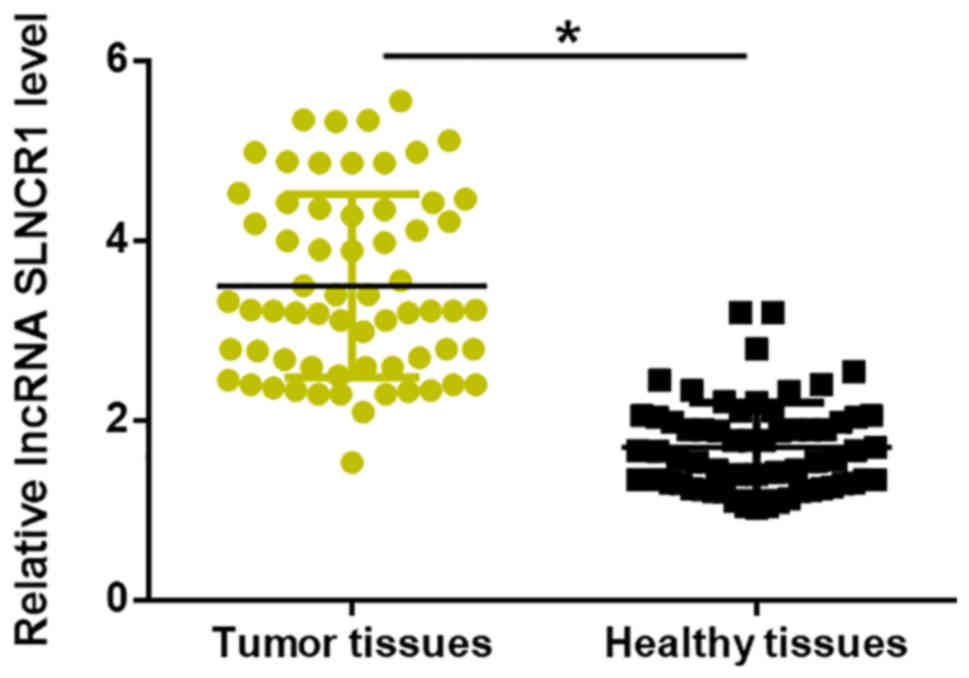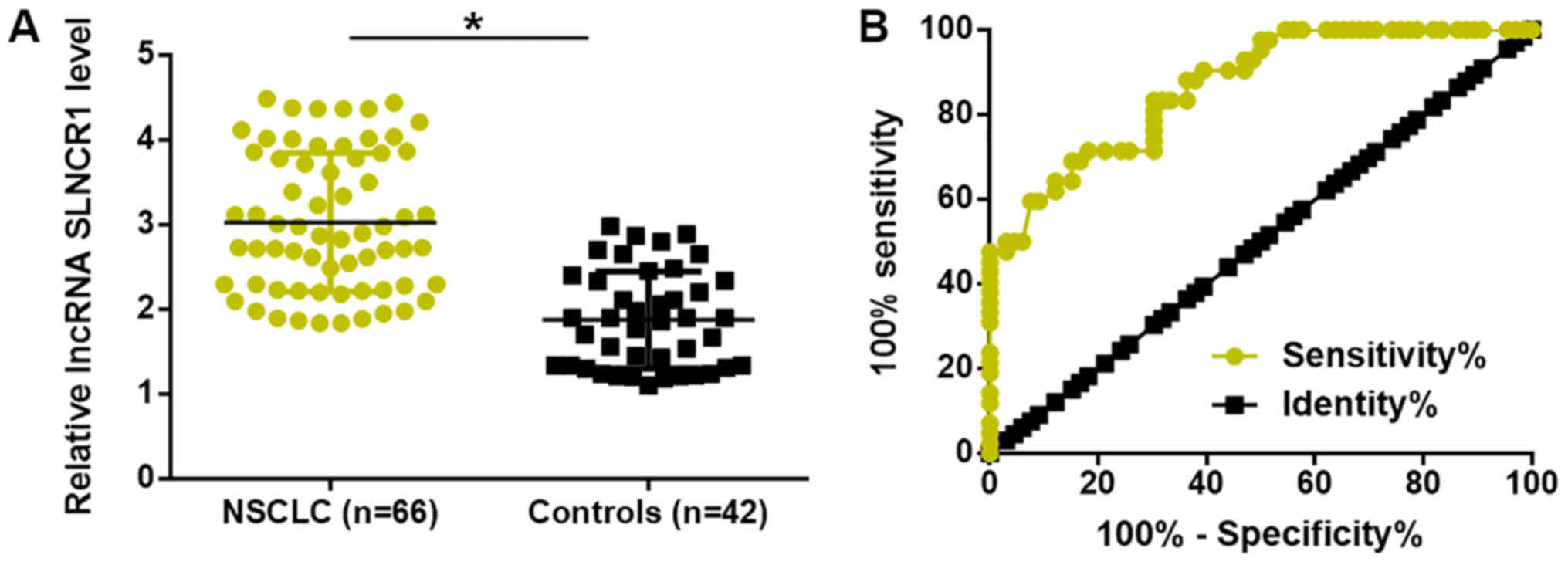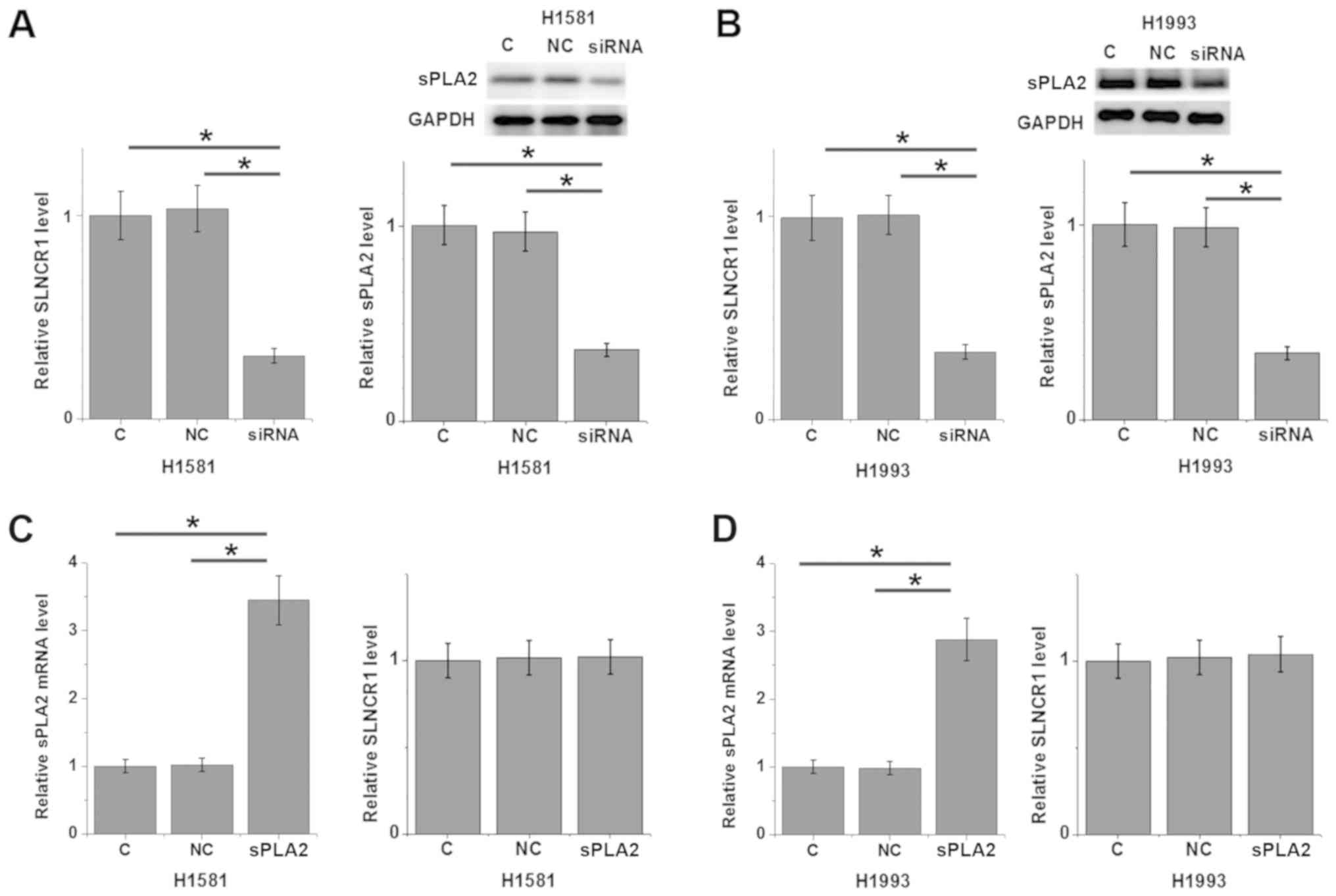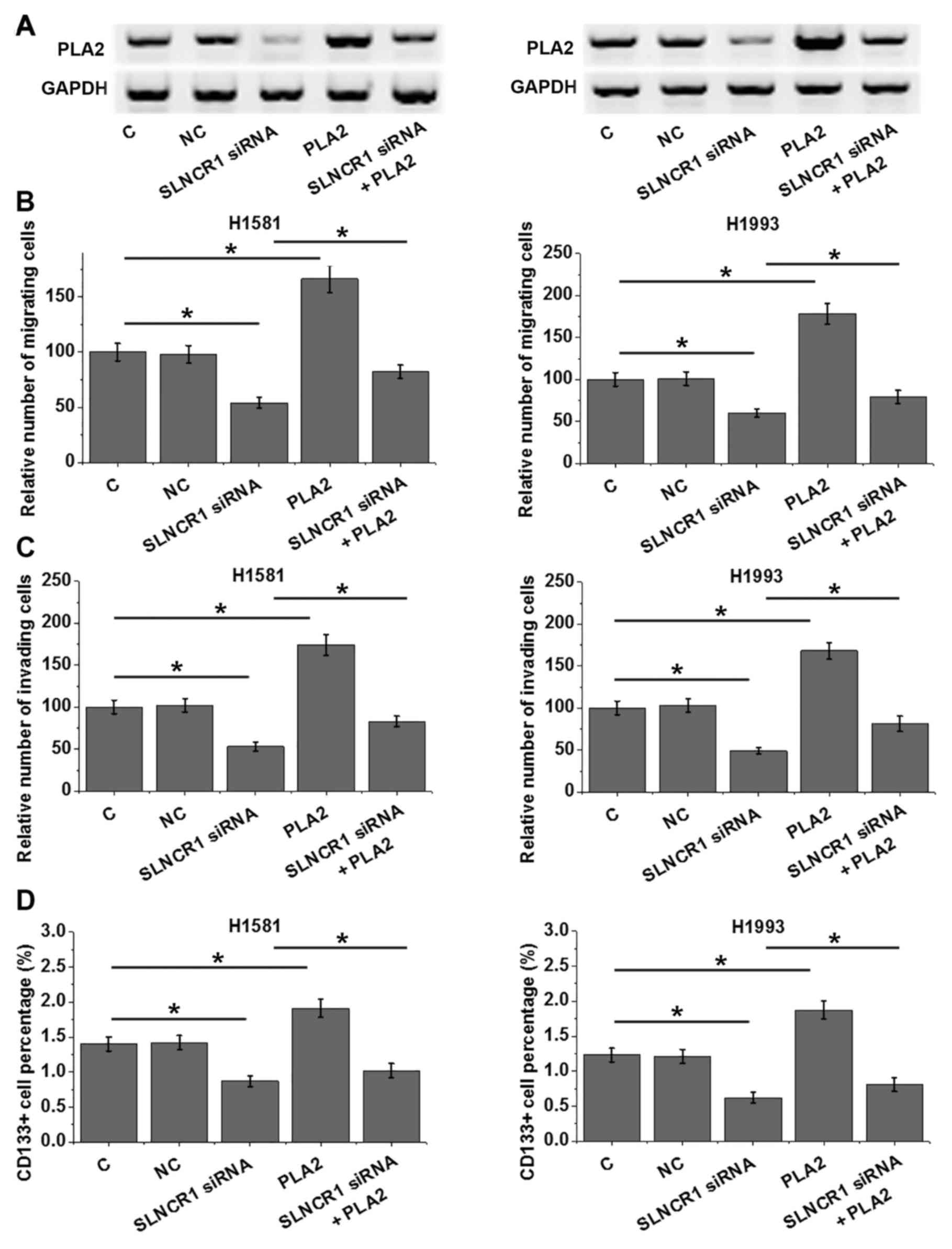Long non‑coding RNA SLNCR1 regulates non‑small cell lung cancer migration, invasion and stemness through interactions with secretory phospholipase A2
- Authors:
- Published online on: July 23, 2019 https://doi.org/10.3892/mmr.2019.10518
- Pages: 2591-2596
-
Copyright: © Xu et al. This is an open access article distributed under the terms of Creative Commons Attribution License.
Metrics: Total
Views: 0 (Spandidos Publications: | PMC Statistics: )
Total PDF Downloads: 0 (Spandidos Publications: | PMC Statistics: )
Abstract
Long non‑coding RNA (lncRNA) SRA‑like non‑coding RNA (SLNCR1; also known as linc00673) is a recently identified oncogenic lncRNA. The role of SLNCR1 in non‑small cell lung cancer (NSCLC), a common malignancy, remains poorly understood. The present study aimed to investigate the involvement of long non‑coding RNA SLNCR1 in the pathogenesis of NSCLC. Reverse transcription‑quantitative PCR (RT‑qPCR) and ELISA were performed to measure the levels of lncRNA SLNCR1 and secretory phospholipase A2 (sPLA2) in lung biopsies, respectively. Correlations between expression levels of lncRNA SLNCR1 and sPLA2 were analyzed by Pearson's correlation analysis. Diagnostic value of lncRNA SLNCR1 for NSCLC was evaluated by receiver operating characteristic curve analysis. lncRNA SLNCR1 small interfering (si)RNA and sPLA2 overexpression vector were transfected into NSCLC cells. Cell migration, invasion and stemness were examined by Transwell migration assay, Matrigel invasion assay and flow cytometric assay, respectively. Following transfection, expression of lncRNA SLNCR1 and sPLA2 was detected by RT‑qPCR and western blotting, respectively. The results demonstrated that lncRNA SLNCR1 expression levels were upregulated in tumor tissues compared with adjacent healthy tissues of patients with NSCLC. Plasma lncRNA SLNCR1 and sPLA2 expression levels were upregulated in patients with NSCLC compared with healthy controls. Plasma lncRNA SLNCR1 and sPLA2 were positively correlated in patients with NSCLC, but not in healthy controls. lncRNA SLNCR1 siRNA silencing inhibited, whereas sPLA2 overexpression promoted cell migratory and invasive abilities and stemness. lncRNA SLNCR1 siRNA silencing led to downregulated sPLA2 expression, whereas sPLA2 overexpression did not significantly affect lncRNA SLNCR1 expression. sPLA2 overexpression attenuated the inhibitory effects of lncRNA SLNCR1 siRNA silencing on cell migration, invasion and stemness. In conclusion, lncRNA SLNCR1 may regulate cancer cell migration, invasion and stemness in NSCLC through interactions with sPLA2.














